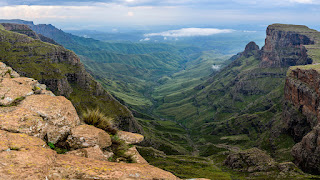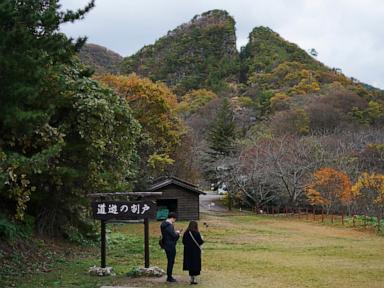ARTICLE AD BOX
Scientists have solved one of Earth's greatest mysteries: how continents rise more than a kilometre, creating some of the world's most dramatic landscapes.
Scientists, led by a team from the University of Southampton, have answered one of the most puzzling questions in plate tectonics: how and why “stable” parts of continents gradually rise to form some of the planet’s most magnificent topographic features. They found that when tectonic plates separate, powerful waves are released deep within the Earth that can cause continental surfaces to rise by more than a kilometre.
Their findings help solve a long-standing mystery about the dynamic forces that shape and connect some of Earth's most dramatic landforms, broad topographic features called "slopes" and "plateaus" that profoundly influence climate and biology.
“Scientists have long suspected that steep, kilometre-high topographic features called great escarpments, such as the classic example surrounding South Africa, are formed when continents rift and eventually split apart,” said Tom Gernon, a professor of earth sciences at the University of Southampton and lead author of the study. “However, explaining why the interiors of continents, away from such escarpments, rise and erode has proven more challenging.”
The team, which includes scientists from the Helmholtz Centre Potsdam - GFZ German Research Centre for Geosciences and the University of Birmingham, say their findings help explain why parts of continents previously thought to be "stable" are experiencing significant uplift and erosion.
He also noted that it explains how such processes can migrate hundreds or even thousands of kilometres inland, forming sweeping high areas known as plateaus, such as the Central Plateau of South Africa.
Their results showed that when continents separate, the stretching of the continental crust causes stirring movements in the Earth's mantle, the layer between the crust and the core.
“The scientists have gathered evidence that suggests the great cliffs arose on the edges of ancient rift valleys, much like the steep walls we see on the margins of the East African Rift today,” a University of Southampton spokesperson explained. “At the same time, the rift event also caused a ‘deep mantle wave’ that travelled along the base of the continent at speeds of between 15 and 20 kilometres per million years.”
“What we have here is a compelling argument that rifting can, under certain conditions, generate long-lasting convection cells in the upper mantle, and that these rift-initiated convective systems have a profound effect on Earth’s surface topography, erosion, sedimentation and the distribution of natural resources,” added Dr Steve Jones, Associate Professor of Earth Systems at the University of Birmingham.
In the study, published in the journal Nature, the team suggests that continental upheaval also affected climate. “The destabilization of continental cores must have affected ancient climates as well,” said Professor Gernon.
.png)
 3 months ago
9
3 months ago
9









 English (US)
English (US)